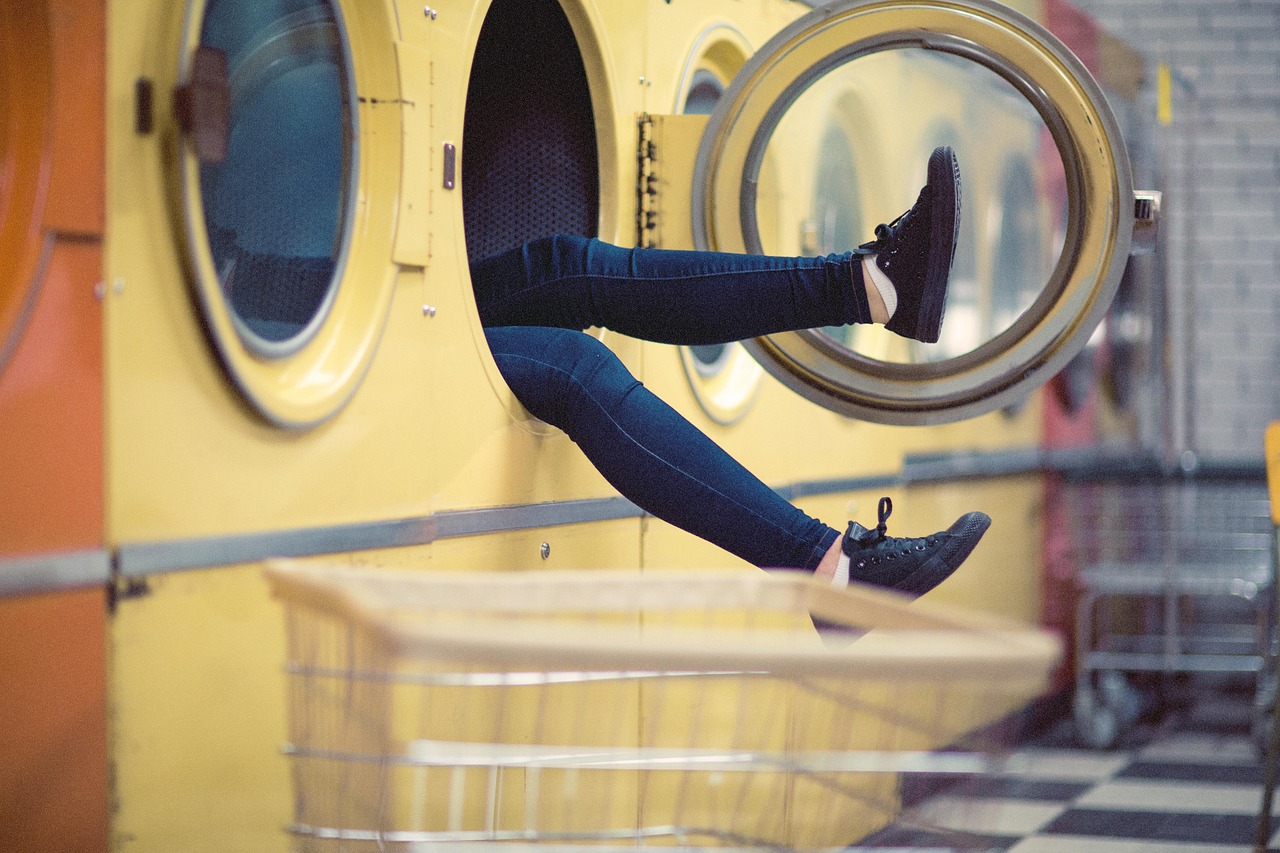This article explores effective methods for safely removing glue from car paint, ensuring your vehicle maintains its appearance without damage. Discover expert tips and techniques for a successful cleaning process.
Different types of glue can adhere to car paint, each requiring unique removal strategies. Common types include adhesive tape residue, super glue, and label adhesive. Identifying the glue type is crucial for selecting the best removal method. For instance, while adhesive tape residue can often be removed with heat, super glue may require a solvent. Knowing the glue type can save you time and ensure you use the right approach.
Understanding how glue ends up on car paint can help you prevent future issues. Common scenarios include the removal of stickers, decals, or protective films from the vehicle’s surface. Additionally, accidental spills during DIY projects or using tape to secure items can lead to unwanted adhesive residue. By being aware of these situations, car owners can take proactive measures to minimize glue residue on their vehicles.
Before starting the glue removal process, it’s essential to gather the right tools. The necessary items include:
- Plastic scraper or credit card
- Microfiber cloths
- Adhesive remover or household items like vinegar and rubbing alcohol
- Heat gun or hairdryer
- Protective gloves and eyewear
Having these tools on hand ensures you are well-prepared for the task ahead.
Follow this detailed guide for effective glue removal, ensuring you use safe techniques that protect your car’s finish while achieving the desired results. Start by cleaning the area around the glue with soap and water to remove dirt and debris. Once clean, assess the glue type and choose your removal method accordingly.
Proper preparation is crucial for successful glue removal. Begin by washing the affected area with a gentle car soap to eliminate surface contaminants. Next, dry the area thoroughly with a microfiber cloth. Assess the glue’s condition; if it’s fresh, it may come off more easily than dried glue. This careful assessment will guide your choice of removal technique.
Different glues require specific techniques for removal. For adhesive tape residue, using heat can soften the glue, making it easier to scrape off. For super glue, a solvent like acetone may be necessary. Always test any solvent on an inconspicuous area first to ensure it doesn’t damage the paint. Use a plastic scraper to gently lift the glue without scratching the surface.
Many household items can effectively remove glue from car paint. This section explores common alternatives, providing eco-friendly and cost-effective solutions for car owners. Vinegar, for instance, is a versatile household item that can help dissolve glue. To use vinegar safely, soak a cloth in it, place it over the glue for a few minutes, and then gently scrape.
Vinegar is a natural solution that can break down many types of adhesive. Apply it by soaking a cloth and placing it on the glue. Allow it to sit for a few minutes to penetrate the adhesive. Afterward, wipe it away with a clean cloth, repeating the process as necessary until the glue is completely removed.
Rubbing alcohol is another effective adhesive remover. Apply it using a cloth or cotton ball, letting it sit on the glue for a short time to loosen the bond. Gently rub the area with a microfiber cloth until the glue begins to lift. Always rinse with water afterward to remove any residue from the alcohol.
For those who prefer ready-made solutions, various commercial products are available. These adhesive removers are specifically formulated to tackle tough glue without harming your car’s paint. Look for products that are safe for automotive use and follow the manufacturer’s instructions for best results.
Not all adhesive removers are created equal. When selecting a product, consider the type of glue you are dealing with. Some removers are designed for specific adhesives, while others are more versatile. Check reviews and product descriptions to ensure you choose a remover that is effective yet gentle on paint.
Using commercial products effectively requires specific techniques. Always apply the remover in a well-ventilated area and follow the instructions closely. Use a microfiber cloth to apply the product, and allow it to sit for the recommended time before wiping it away. This maximizes results while protecting your car’s finish.
Prevention is key to avoiding glue issues on your car. Practical tips for car owners include avoiding the use of strong adhesives on surfaces that may require removal. When applying stickers or decals, ensure they are of high quality and designed for automotive use to minimize residue.
If you use stickers or decals, proper care is essential. When removing these items, use heat to soften the adhesive and peel them off slowly. This technique minimizes the risk of leaving behind residue. Consider using a clear coat over decals to protect them and make removal easier in the future.
Regular maintenance can help protect your car’s paint from glue and other contaminants. Wash your vehicle frequently and apply a wax or sealant to create a protective barrier. This not only enhances the appearance but also makes it easier to remove any adhesive that may accidentally come into contact with the paint.
Sometimes, glue removal can be challenging, and seeking professional help may be necessary. If you’re unsure about the type of glue or the best removal method, consulting a professional detailer can save you time and prevent potential damage. Professionals have access to specialized products and techniques that can effectively remove glue without harming your vehicle’s finish.

Understanding the Types of Glue on Cars
When it comes to maintaining the pristine appearance of your vehicle, understanding the types of glue that can adhere to car paint is crucial. Different adhesives have unique properties and removal challenges. This knowledge will empower you to choose the most effective removal strategy, minimizing the risk of damaging your car’s finish.
There are several types of glue that can accidentally end up on your car’s paint, each with its own characteristics:
- Adhesive Tapes: These are often used for temporary fixes or attaching items. They can leave a sticky residue that is challenging to remove.
- Super Glue: Known for its strong bonding capabilities, super glue can create a tough challenge when it comes to removal, often requiring specialized solvents.
- Epoxy Resins: These are used for permanent bonding and can be particularly difficult to remove once cured.
- Hot Glue: Commonly used in crafts, hot glue can melt and become sticky when heated, making it easier to remove if done carefully.
- Automotive Adhesives: These are specifically designed for automotive applications and can be very strong, often requiring professional-grade removal products.
Identifying the type of glue is the first step towards effective removal. Here are some tips to help you:
- Visual Inspection: Look closely at the glue. Is it thick and rubbery, or thin and oily? This can give you clues about its composition.
- Texture and Color: The color and texture can also help in identifying the glue type. For example, super glue is typically clear and dries hard.
- Test a Small Area: Before applying any removal method, test it on a less visible area to ensure it doesn’t damage the paint.
Once you have identified the type of glue, you can select the appropriate removal method. For instance:
- For Adhesive Tapes: Use a mixture of soap and water, or a dedicated adhesive remover.
- For Super Glue: Acetone or nail polish remover can be effective, but test first to avoid paint damage.
- For Epoxy Resins: You may need a heat gun to soften the glue before scraping it off carefully.
- For Hot Glue: Gently heat the glue with a hairdryer to soften it, making it easier to peel away.
- For Automotive Adhesives: Look for products specifically designed for automotive use to ensure safety and effectiveness.
Understanding the different types of glue and their characteristics can save you time and frustration during the removal process. By selecting the right method tailored to the glue type, you can maintain your car’s appearance and protect its paint from potential damage.
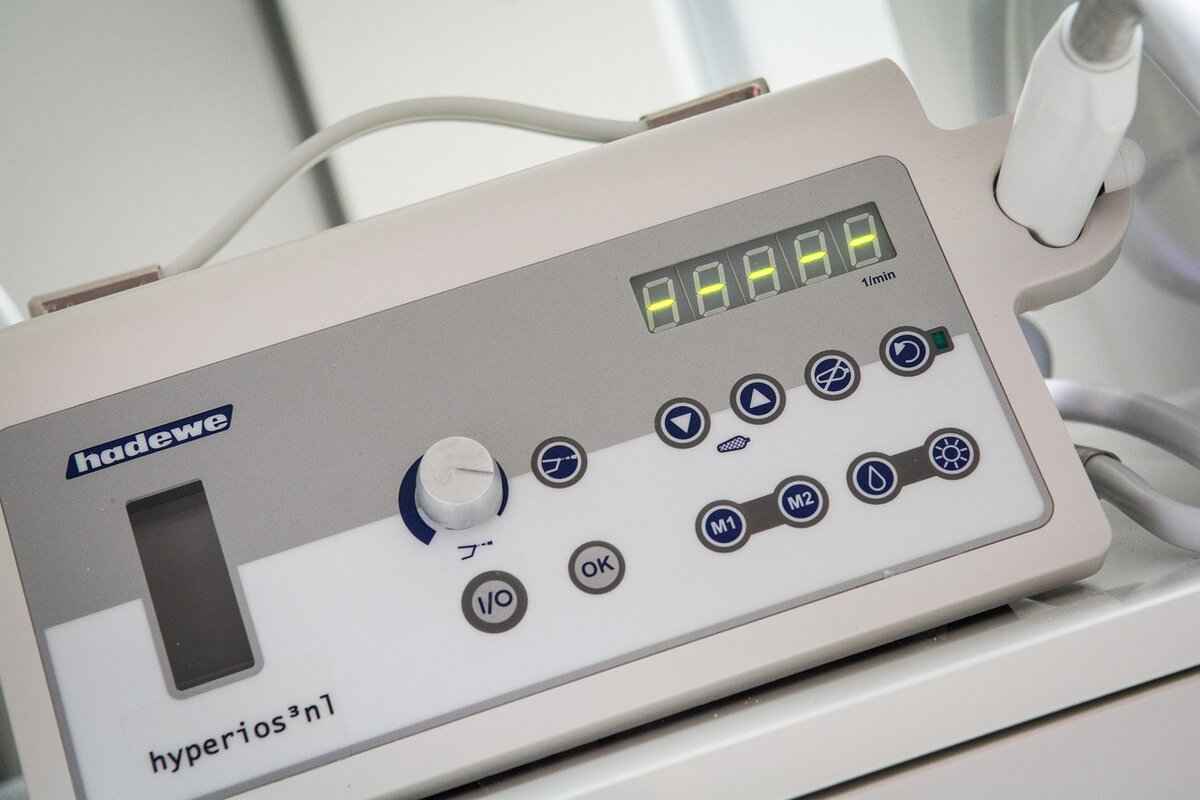
Common Causes of Glue Residue on Cars
Understanding how glue residue ends up on car paint is crucial for any car owner. Glue can be a nuisance, often appearing unexpectedly and leading to frustrating cleaning challenges. By recognizing the common causes of glue residue, you can take proactive steps to avoid these issues in the future. Below are some prevalent scenarios where glue can become an unwelcome guest on your vehicle’s surface.
- Accidental Spills During Repairs: When conducting DIY repairs or modifications, it’s easy to accidentally spill glue on your car’s paint. This is particularly common when using adhesive products for attaching parts or fixing minor damages.
- Improper Sticker or Decal Removal: Many car owners love to personalize their vehicles with stickers and decals. However, when it comes time to remove them, the adhesive can often leave behind residue, especially if not done carefully.
- Environmental Factors: Glue can also come from external sources, such as tree sap or spilled substances in parking lots. These environmental factors can adhere to your car’s surface and dry, creating a sticky mess that can be difficult to remove.
- Using Low-Quality Products: Sometimes, using cheap or unsuitable adhesives for car-related projects can lead to residue problems. These products may not bond as intended, leaving behind a sticky surface when removed.
- Improper Storage: If you store your car in a garage or shed where adhesives or other sticky substances are present, they can inadvertently transfer onto your vehicle’s paint. This is especially true if items are not stored properly.
- Winter Weather: Cold weather can affect adhesives, causing them to become more brittle and leave residue when removed. Ice and snow can also mix with glue, leading to more complex cleaning situations.
Preventive Measures
To prevent glue residue from becoming a persistent issue, car owners should take several preventive measures. Firstly, always use high-quality adhesives specifically designed for automotive use. This ensures better adhesion and easier removal without leaving behind residue.
Secondly, when applying or removing stickers and decals, take your time. Use a heat gun or hairdryer to soften the adhesive before peeling it off slowly. This method can significantly reduce the likelihood of residue being left behind.
Additionally, regularly washing and waxing your car can create a protective barrier against potential adhesive contaminants. This maintenance not only enhances your vehicle’s appearance but also makes it easier to clean any accidental spills.
Finally, consider the environment where you park your car. If possible, avoid areas where adhesives may be present, such as near construction sites or areas with a lot of tree sap.
By understanding these common causes and implementing preventive measures, car owners can significantly reduce the chances of glue residue affecting their vehicle’s paint, ensuring a cleaner and more polished appearance for years to come.
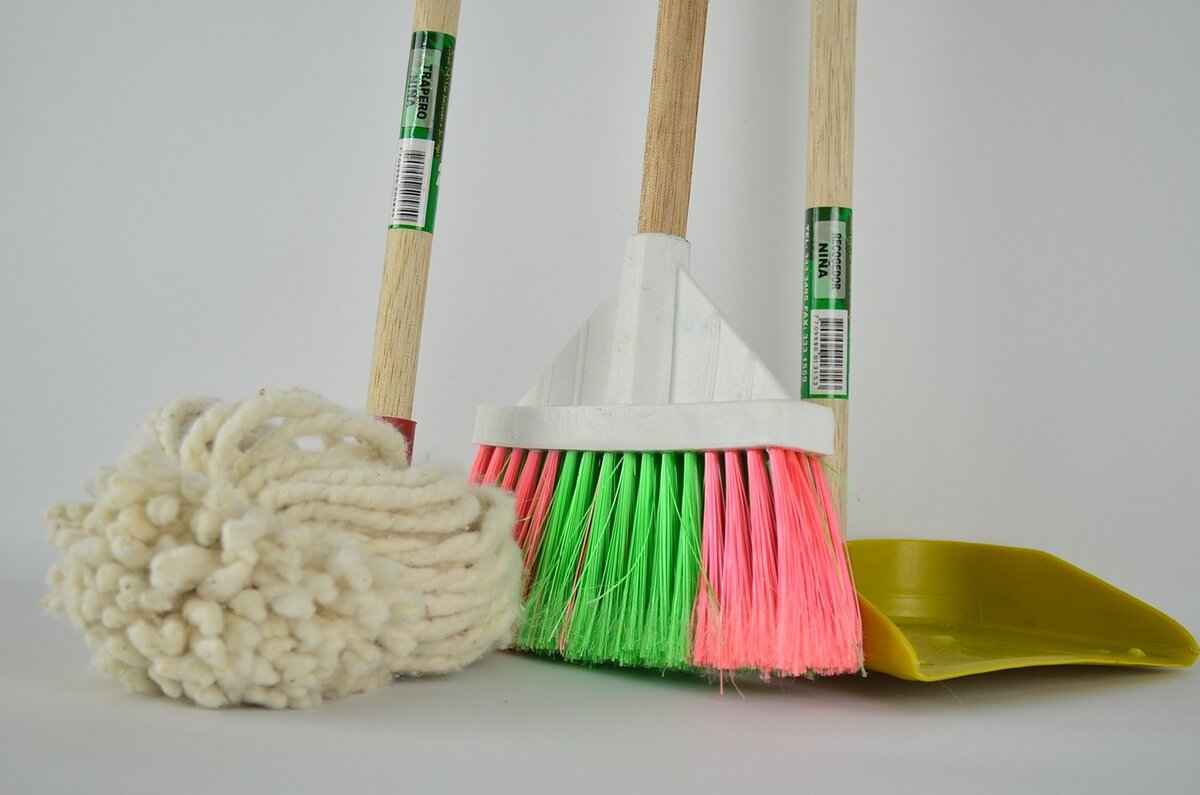
Tools Needed for Glue Removal
Before embarking on the glue removal process, it is crucial to gather the necessary tools to ensure a smooth and effective experience. Having the right equipment not only makes the task easier but also minimizes the risk of damaging your car’s paint. Below is a comprehensive list of essential items you should have on hand:
- Plastic Scraper: A plastic scraper is ideal for gently lifting glue without scratching the surface of your car’s paint.
- Adhesive Remover: Look for a commercial adhesive remover that is safe for automotive finishes. Always check the label for compatibility.
- Microfiber Cloths: These are perfect for applying solvents and wiping away residue without causing scratches.
- Rubbing Alcohol: A common household item that can effectively break down adhesive. Ensure you use it in moderation and test a small area first.
- Heat Gun or Hair Dryer: Applying gentle heat can soften the glue, making it easier to remove. Be cautious not to overheat the paint.
- Vinegar: An eco-friendly option that can help dissolve glue. It is safe for most car paints when used properly.
- Paint Sealant: After removing the glue, applying a paint sealant can help protect your car’s finish from future adhesive issues.
In addition to these tools, it is advisable to have the following items ready:
- Gloves: Protect your hands from chemicals and ensure a better grip on tools.
- Safety Goggles: Always wear goggles to protect your eyes from splashes, especially when using solvents.
- Bucket of Water: Keep a bucket of water nearby for rinsing off any residues and cleaning tools.
By assembling these tools beforehand, you set yourself up for a successful glue removal process. Remember, preparation is key. Assess the extent of the glue residue and choose the appropriate method based on the tools at your disposal. This careful approach not only enhances efficiency but also safeguards your vehicle’s paintwork from potential harm.
In summary, having the right tools is essential for effective glue removal. Equip yourself with the items listed above, and you will be well-prepared to tackle any adhesive challenges that may arise.
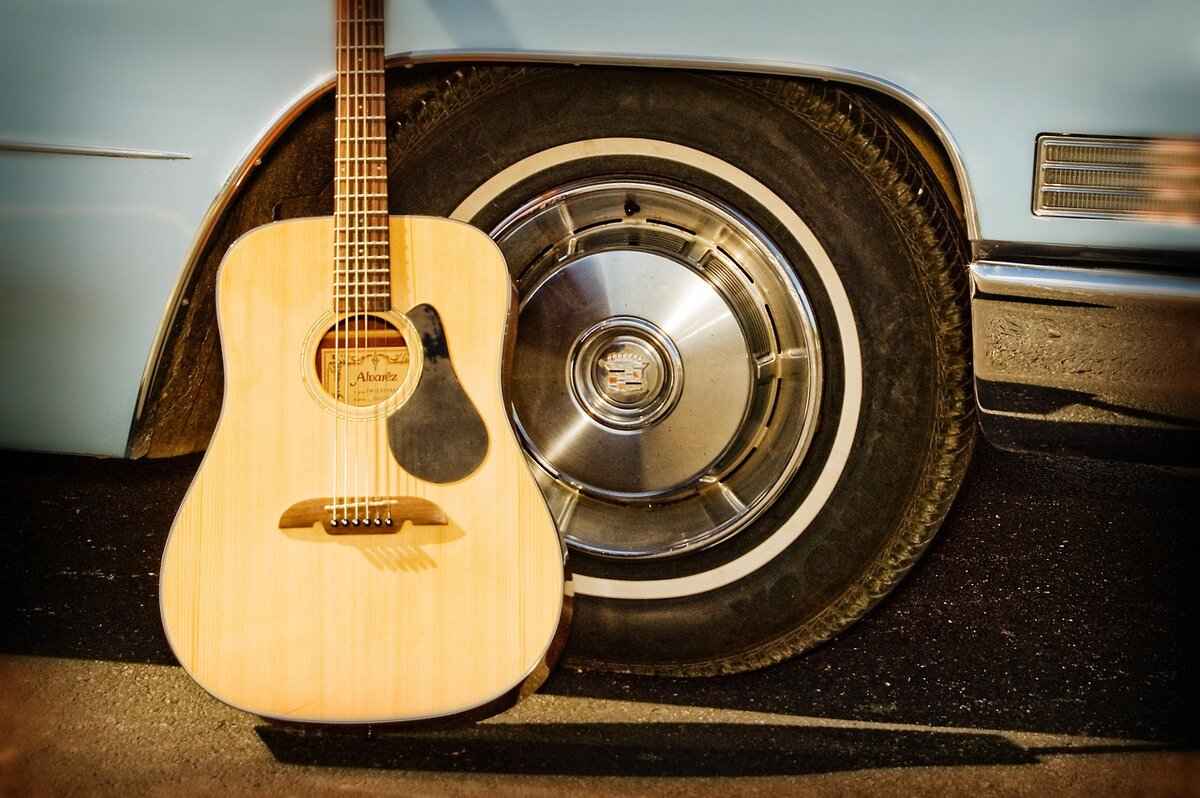
Step-by-Step Guide to Remove Glue from Car Paint
Removing glue from car paint can seem daunting, but with the right approach, you can do it safely and effectively. This guide provides a comprehensive, step-by-step method to ensure that your vehicle’s finish remains intact while you tackle that pesky adhesive.
1. Gather Your Supplies
Before starting the glue removal process, it’s essential to gather the right tools. You will need:
- Soft microfiber cloths
- Adhesive remover or household items like vinegar or rubbing alcohol
- Plastic scraper or credit card
- Warm water
- Car wax or polish (for finishing touches)
2. Clean the Area
Begin by washing the affected area with warm, soapy water. This removes any dirt or debris that might scratch the paint during the removal process. Rinse thoroughly and dry with a microfiber cloth.
3. Test the Adhesive Remover
Before applying any adhesive remover, it’s crucial to test it on a small, inconspicuous area of your car’s paint. This ensures that the product won’t cause any discoloration or damage to the finish.
4. Apply the Adhesive Remover
Once you’ve confirmed that the adhesive remover is safe, apply a small amount directly onto the glue residue. Let it sit for a few minutes to soften the adhesive. If you’re using vinegar or rubbing alcohol, soak a cloth with the liquid and place it over the glue for a similar effect.
5. Gently Scrape the Glue
Using a plastic scraper or a credit card, gently scrape the softened glue away from the paint. Always work from the edges of the glue toward the center to avoid spreading it further. Be cautious not to apply too much pressure, as this can damage the paint.
6. Wipe Clean
After removing the glue, use a clean microfiber cloth dampened with warm water to wipe away any residue from the adhesive remover. Ensure that no product is left on the paint, as this can lead to further issues.
7. Polish the Area
To restore the shine of your car’s paint, apply a small amount of car wax or polish to the area. This step not only enhances the appearance but also provides a protective layer against future contaminants.
8. Regular Maintenance
To prevent glue residue in the future, consider regular maintenance of your vehicle’s exterior. Keeping your car clean and protected with wax can minimize the adhesion of unwanted substances.
By following these steps, you can effectively remove glue from your car’s paint without causing damage. Always remember to be patient and gentle throughout the process, ensuring that your vehicle remains in excellent condition.
Preparation Steps Before Glue Removal
Proper preparation is crucial for successful glue removal from your car’s paint. Taking the right steps before diving into the removal process not only ensures a smoother experience but also minimizes the risk of damaging your vehicle’s finish. This section will guide you through essential preparatory actions, including cleaning and assessing the affected area.
- Assess the Glue Type: Before you begin the removal process, it’s vital to identify the type of glue that has adhered to your car’s paint. Different adhesives, such as super glue, tape residue, or sticker glue, require different removal techniques. Understanding the glue type will help you select the appropriate method for removal.
- Gather Necessary Supplies: Ensure you have all the necessary tools and materials on hand. Common items include:
| Tool/Material | Purpose |
|---|---|
| Microfiber Cloths | For gentle cleaning and application of solvents. |
| Adhesive Remover | To dissolve glue without damaging paint. |
| Heat Gun or Hair Dryer | To soften glue for easier removal. |
| Plastic Scraper | To gently lift glue without scratching the paint. |
- Clean the Area: Begin by washing the affected area with soap and water to remove dirt and debris. This step is crucial as it prevents any particles from scratching the paint during the removal process. After washing, dry the area thoroughly with a clean microfiber cloth.
- Test a Small Area: Before applying any adhesive remover, it’s wise to test the product on a small, inconspicuous area of your car’s paint. This test will help ensure that the remover does not cause discoloration or damage.
- Choose the Right Environment: Perform the glue removal in a shaded area to prevent the adhesive remover from drying too quickly, which can hinder its effectiveness. Additionally, ensure the temperature is moderate, as extreme heat or cold can affect the removal process.
By following these preparation steps, you set the stage for a successful glue removal process. Proper assessment, cleaning, and tool gathering will not only make the task easier but also help protect your car’s paint from potential damage.
Applying the Right Removal Technique
When it comes to removing glue from car paint, understanding the right technique is crucial. Different types of glue adhere to surfaces in various ways, and each requires a tailored approach for effective removal without damaging the paint. This section outlines several methods, including the use of solvents, heat, and scraping, ensuring that you can choose the most suitable technique based on the glue type present.
- Solvents: Solvents are often the first line of defense against adhesive residues. Common solvents include acetone, mineral spirits, and commercial adhesive removers. It’s essential to test the solvent on a small, inconspicuous area first to ensure it does not damage the paint. To apply, soak a cloth in the solvent, then gently dab the glue residue, allowing it to sit for a few minutes before wiping away.
- Heat: Applying heat can soften glue, making it easier to remove. A heat gun or a hairdryer can be used for this purpose. Hold the heat source a few inches away from the glue and move it back and forth to avoid overheating any one spot. Once the glue becomes pliable, use a plastic scraper to gently lift it off. Always be cautious not to overheat the paint, as this can cause damage.
- Scraping: For tougher adhesive residues, scraping may be necessary. Use a plastic scraper or a credit card to gently lift the glue from the surface. Avoid using metal scrapers, as they can scratch the paint. It’s advisable to combine scraping with a solvent or heat for better results. Always scrape in a direction parallel to the surface to minimize the risk of scratches.
Additionally, it’s important to consider the type of glue you are dealing with. For instance, super glue may require a different approach compared to double-sided tape. Identifying the glue type can save time and effort in the removal process. If you are unsure, consult with a professional or refer to product-specific guidelines.
After successfully removing the glue, it’s crucial to clean the area thoroughly. Use a mild soap solution and a soft cloth to remove any remaining residue from the solvent or adhesive. This will help protect the paint and maintain the vehicle’s overall appearance.
In summary, applying the right removal technique is essential for effectively eliminating glue from car paint. By understanding the different methods available—solvents, heat, and scraping—you can choose the best strategy for your specific situation, ensuring that your vehicle remains in optimal condition.
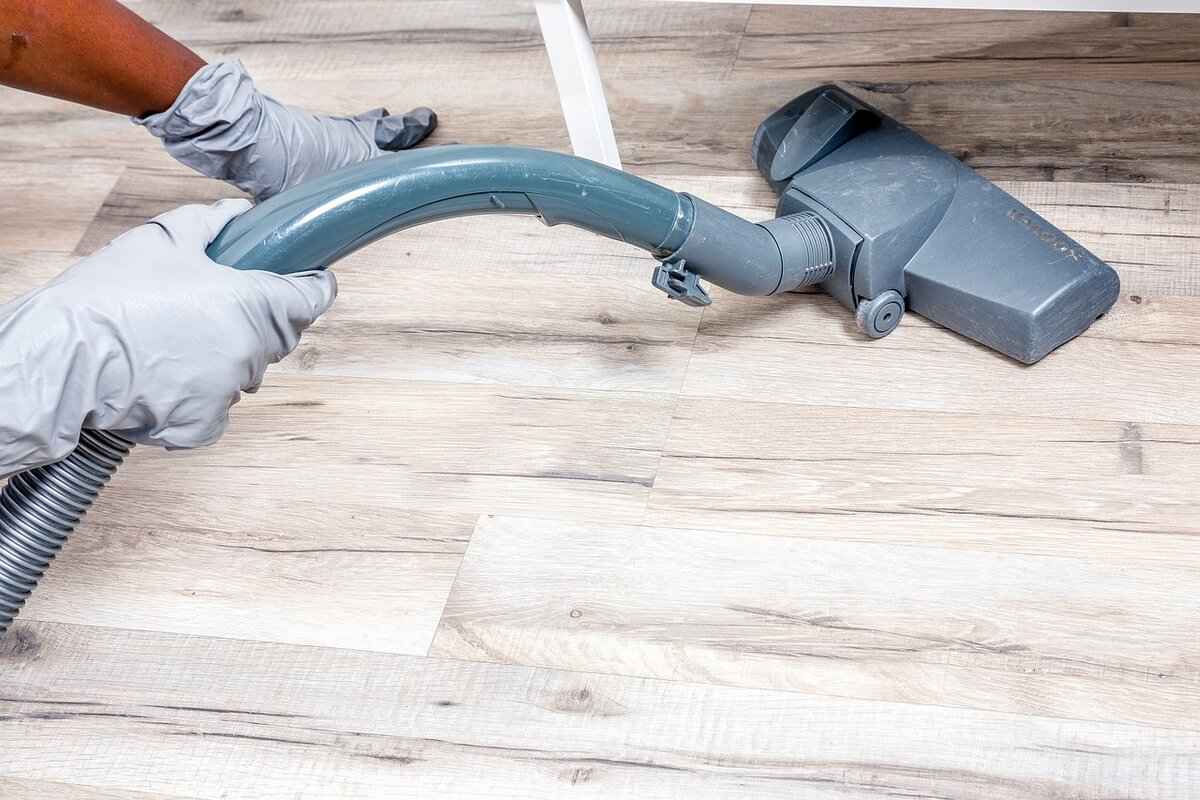
Using Household Items for Glue Removal
When it comes to removing glue from car paint, many car owners may not realize that they can turn to their own kitchens for effective solutions. Numerous household items can serve as eco-friendly and cost-effective alternatives to commercial adhesive removers. This section will delve into some common household items that can help you tackle glue residue without damaging your vehicle’s finish.
- Vinegar: A staple in many homes, vinegar is renowned for its versatility. Its acidic properties make it effective for dissolving glue. To use vinegar, soak a clean cloth in white vinegar and gently rub it on the glue residue. Allow it to sit for a few minutes to penetrate the adhesive, then wipe away the glue with a soft cloth. Always rinse the area with water afterward to remove any vinegar residue.
- Baking Soda and Water Paste: Baking soda is not just for baking; it can also be an effective glue remover. Mix baking soda with a small amount of water to create a paste. Apply the paste to the glue, and let it sit for about 10 minutes. The mild abrasiveness of baking soda can help lift the glue without scratching the paint. Gently scrub with a soft cloth and rinse thoroughly.
- Olive Oil or Cooking Oil: Oils can help break down adhesive bonds. Apply a small amount of olive oil or any cooking oil to the glue, allowing it to soak for a few minutes. The oil will loosen the adhesive, making it easier to wipe away. After removal, wash the area with soap and water to eliminate any oily residue.
- Rubbing Alcohol: This common household item is effective for removing sticky residues. Dampen a cloth with rubbing alcohol and gently rub the glue until it begins to dissolve. Rubbing alcohol evaporates quickly, reducing the risk of damage to the paint. Be sure to wash the area afterward to remove any remaining alcohol.
- Peanut Butter: Surprisingly, peanut butter can also help in removing glue. The oils in peanut butter can break down adhesive, making it easier to wipe away. Apply a small amount directly to the glue, let it sit for a few minutes, and then wipe it off with a soft cloth. Follow up with a soap and water wash to eliminate any residue.
When using these household items, it is essential to test them on a small, inconspicuous area of your car first. This precaution helps ensure that the product does not adversely affect the paint. Moreover, always use soft cloths to avoid scratching the surface.
Utilizing household items not only saves money but also promotes a more sustainable approach to car maintenance. By incorporating these methods into your routine, you can effectively manage glue residues while keeping your car looking pristine.
Vinegar as a Natural Adhesive Remover
Vinegar is not just a culinary staple; it is also a versatile household item that can effectively dissolve glue, making it an excellent choice for removing adhesive residues from car paint. This section will guide you on how to use vinegar safely on your vehicle, ensuring that the paint remains undamaged throughout the process.
Before diving into the application process, it’s essential to understand why vinegar is effective. The acetic acid in vinegar helps to break down the adhesive properties of glue, allowing it to be removed easily. However, it’s crucial to use vinegar correctly to prevent any potential damage to your car’s finish.
- Step 1: Gather Your Supplies
- White vinegar
- Soft cloth or sponge
- Water
- Spray bottle (optional)
- Step 2: Prepare the Mixture
Mix equal parts of vinegar and water in a spray bottle. This dilution helps to reduce the acidity of the vinegar, making it safer for use on your car’s paint.
- Step 3: Apply the Vinegar Solution
Spray the vinegar solution onto the glue residue and let it sit for a few minutes. This waiting period allows the vinegar to penetrate the glue, making it easier to remove.
- Step 4: Wipe Away the Glue
Using a soft cloth or sponge, gently rub the area where the glue is located. Be cautious and avoid using excessive force, as this could scratch the paint.
- Step 5: Rinse the Area
After the glue has been removed, rinse the area with clean water to remove any remaining vinegar solution. This step is vital to prevent any potential residue from affecting the paint.
It’s essential to test the vinegar solution on a small, inconspicuous area of your car’s paint before applying it to the glue. This precaution helps ensure that there will be no adverse reactions or discoloration. Additionally, always work in a shaded area to prevent the vinegar from drying too quickly, which could lead to streaks.
In summary, vinegar is an effective and eco-friendly adhesive remover that can be safely used on car paint when applied correctly. By following the steps outlined above, you can remove glue residue without damaging your vehicle’s finish, ensuring it continues to look its best.
Using Rubbing Alcohol for Effective Removal
Rubbing alcohol, or isopropyl alcohol, is a readily accessible household item that proves to be an effective adhesive remover. When it comes to removing stubborn glue residues from car paint, it offers a safe and efficient solution. However, it’s essential to understand the proper application techniques and necessary precautions to ensure that your vehicle’s finish remains intact.
Application Techniques
To effectively use rubbing alcohol for glue removal, follow these steps:
- Test First: Before applying rubbing alcohol directly to the affected area, conduct a patch test on a small, inconspicuous spot. This ensures that the alcohol does not adversely affect the paint.
- Prepare the Area: Clean the area around the glue residue with soap and water to remove any dirt or debris. Dry the surface thoroughly before proceeding.
- Apply the Alcohol: Soak a clean microfiber cloth in rubbing alcohol. Gently dab the cloth onto the glue residue, allowing the alcohol to penetrate the adhesive. Avoid rubbing vigorously, as this may scratch the paint.
- Let it Sit: Allow the alcohol to sit on the glue for a few minutes. This will soften the adhesive, making it easier to remove.
- Wipe Away: After a few minutes, use the cloth to gently wipe away the glue. If necessary, repeat the process until all residue is removed.
- Final Clean: Once the glue is gone, clean the area again with soap and water to remove any remaining alcohol. Dry the surface thoroughly.
Precautions to Take
While rubbing alcohol is generally safe for car paint, taking certain precautions is crucial:
- Avoid Direct Sunlight: Perform the glue removal process in a shaded area or indoors. Direct sunlight can cause the alcohol to evaporate too quickly, reducing its effectiveness.
- Use Sparingly: Use rubbing alcohol in moderation. Excessive application can lead to paint dullness over time.
- Ventilation: Ensure proper ventilation in the area where you are working, as the fumes from rubbing alcohol can be strong.
- Keep Away from Plastic: Be cautious when using rubbing alcohol near plastic trim or parts, as it may cause discoloration or damage.
In summary, rubbing alcohol is a powerful tool for removing glue from car paint when used correctly. By following the outlined application techniques and precautions, you can effectively eliminate adhesive residues while preserving your vehicle’s finish. Always remember to conduct a patch test and proceed with caution to ensure the best results.
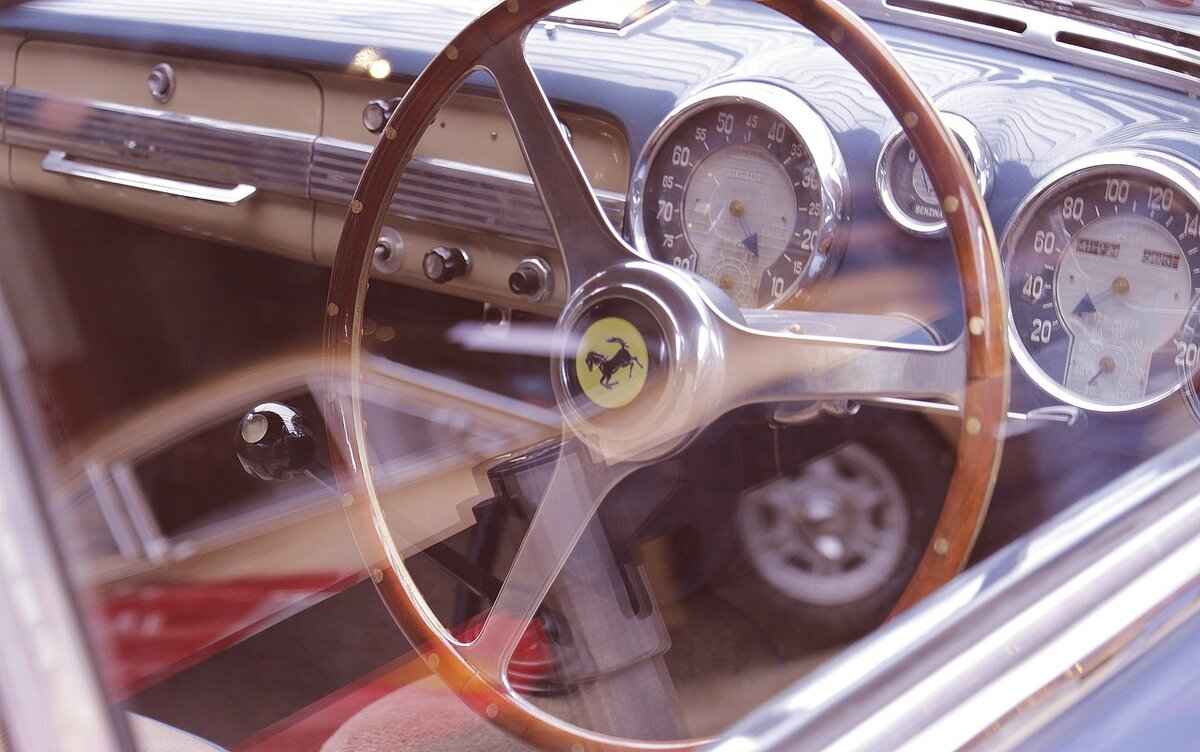
Commercial Products for Glue Removal
When it comes to removing glue from car paint, many car owners prefer the convenience of ready-made solutions. Various commercial adhesive removers are available on the market, each designed to tackle different types of adhesives while being safe for automotive finishes. This section will review some of the most popular adhesive removers, highlighting their effectiveness and safety for car paint.
- Goo Gone: One of the most recognized brands in adhesive removal, Goo Gone is renowned for its ability to dissolve sticky residues without damaging paint. It is particularly effective on stickers, tape residues, and other adhesives. To use, simply apply a small amount to the affected area, let it sit for a few minutes, and wipe away with a clean cloth.
- 3M Adhesive Remover: This product is favored by professionals for its powerful formula that quickly breaks down adhesives. It is safe for automotive finishes and can be used on a variety of surfaces. Users should apply it with a soft cloth, ensuring not to scrub too hard, which could risk damaging the paint.
- WD-40: While primarily known as a lubricant, WD-40 can also be effective in removing glue. Its penetrating formula helps to loosen adhesive bonds. Spray it on the glue, let it sit for a minute, and then gently scrape off the residue with a plastic scraper.
- Adhesive Remover Wipes: For those who prefer convenience, adhesive remover wipes can be a great option. These pre-moistened wipes are easy to use and can effectively remove glue without the need for additional tools. They are particularly handy for quick clean-ups.
When selecting a commercial adhesive remover, it is crucial to consider the specific type of glue you are dealing with, as well as the surface of your car’s paint. Always read the manufacturer’s instructions and conduct a spot test in an inconspicuous area to ensure compatibility.
Safety Considerations: While many commercial products are designed to be safe for car paint, it is essential to handle them with care. Work in a well-ventilated area and use gloves to protect your skin. If you are unsure about a product, consult with automotive professionals or refer to user reviews to gauge its effectiveness and safety.
In conclusion, commercial adhesive removers provide a convenient and effective solution for removing glue from car paint. By choosing the right product and following the application instructions carefully, you can restore your vehicle’s appearance without causing damage.
Choosing the Right Adhesive Remover
When it comes to removing glue from your car’s paint, it is crucial to recognize that not all adhesive removers are created equal. Different types of adhesives require different approaches for effective and safe removal. Selecting the right product can make all the difference in protecting your vehicle’s finish while ensuring effective cleaning. This guide will help you navigate the options available and assist you in making an informed decision.
First and foremost, identify the type of glue you are dealing with. Common types of adhesives found on cars include super glue, epoxy, double-sided tape, and vinyl adhesive. Each of these has unique properties and may respond differently to various solvents. For instance, super glue is typically cyanoacrylate-based and may require specific solvents like acetone for effective removal, while tape adhesives may require a more gentle approach.
Next, consider the ingredients in the adhesive remover. Look for products that are specifically formulated for automotive use, as these are designed to be safe on car paint. Many commercial adhesive removers contain solvents that can effectively break down adhesives without harming the underlying finish. Always check for labels that indicate non-toxic and biodegradable properties, which are better for both your vehicle and the environment.
- Solvent-Based Removers: These are effective for tough adhesives but may require caution to avoid damaging the paint. Always test on a small area first.
- Natural Removers: Options like vinegar and citrus-based products are gentler on paint and can be effective for lighter adhesive residues.
- Heat Methods: Using a heat gun or hairdryer can soften the adhesive, making it easier to scrape away. However, be cautious not to overheat the paint.
Before making a purchase, read reviews and seek recommendations from other car owners or professionals. User experiences can provide valuable insights into the effectiveness and safety of specific products. Additionally, consult with your local automotive supply store for expert advice tailored to your specific situation.
Once you have selected the right adhesive remover, follow the manufacturer’s instructions carefully. Apply the product in a well-ventilated area and use protective gear such as gloves and eyewear. Start by applying the remover to a small, inconspicuous area to ensure it does not adversely affect the paint. If the test area is successful, proceed with the removal process.
In conclusion, choosing the right adhesive remover is essential for effectively removing glue from your car’s paint without causing damage. By understanding the types of adhesives, selecting safe products, and following proper application techniques, you can maintain your vehicle’s appearance and integrity. Remember, when in doubt, consulting a professional can save you time and potential damage.
Application Tips for Commercial Products
When it comes to removing glue from your car’s paint, commercial products can be highly effective. However, using these products correctly is crucial to ensure that you achieve the best results without damaging your vehicle’s finish. This section provides essential application tips for maximizing the effectiveness of commercial adhesive removers while protecting your car’s paint.
- Read Instructions Carefully: Before applying any commercial product, always read the manufacturer’s instructions. Each product may have specific guidelines regarding application methods, dwell time, and safety precautions.
- Test on a Small Area: To avoid any adverse reactions, it’s wise to test the product on a small, inconspicuous area of your car first. This step will help you determine if the product is safe for your car’s paint.
- Use the Right Tools: Equip yourself with the necessary tools, such as microfiber cloths, soft sponges, or plastic scrapers. Avoid using abrasive materials that can scratch the paint.
- Apply in a Well-Ventilated Area: Many commercial adhesive removers contain strong chemicals. Ensure you are working in a well-ventilated space to prevent inhalation of fumes and to protect your health.
- Follow the Dwell Time: Allow the product to sit on the glue for the recommended dwell time. This period is crucial for the product to break down the adhesive effectively.
- Wipe Gently: When removing the glue, use gentle, circular motions to avoid damaging the paint. Do not scrub aggressively, as this can lead to scratches or dulling of the finish.
- Rinse Thoroughly: After the glue has been removed, rinse the area thoroughly with water to eliminate any residue from the adhesive remover. This step helps prevent potential damage from lingering chemicals.
- Apply Wax or Sealant: After the glue has been successfully removed and the area is clean, consider applying a coat of wax or sealant. This will help restore the shine and provide a protective barrier against future contaminants.
By following these tips, you can effectively use commercial products to remove glue from your car’s paint while minimizing the risk of damage. Remember, the key to a successful glue removal process lies in preparation, careful application, and proper follow-up care. With the right approach, your vehicle can maintain its pristine appearance.

Preventing Glue Residue in the Future
Preventing glue residue on your car is essential for maintaining its aesthetic appeal and protecting its paintwork. By taking proactive measures, car owners can significantly reduce the risk of adhesive residue from various sources, including stickers, decals, and other adhesives. Below are some practical tips and strategies to help you keep your vehicle free from unwanted glue residue.
- Choose High-Quality Adhesives: When applying stickers or decals, opt for high-quality products that are designed for automotive use. These adhesives often allow for easier removal without leaving behind residue.
- Proper Application: Ensure that stickers and decals are applied correctly. Clean the surface thoroughly before application to prevent dirt and grime from trapping adhesive. This will make future removal easier and less likely to cause residue.
- Timing of Removal: If you plan to remove a sticker or decal, do so promptly. The longer an adhesive sits on the paint, the more difficult it can become to remove without leaving residue.
Regular Maintenance to Protect Car Paint
Regular maintenance is crucial in preventing glue residue and protecting your car’s paint. Here are some effective maintenance routines:
- Wash Your Car Frequently: Regular washing removes dirt and debris that can interact with adhesives. Use a gentle car wash soap and avoid harsh chemicals that might damage the paint.
- Waxing: Apply a high-quality wax every few months. Wax acts as a protective barrier against contaminants, making it easier to remove any adhesive residues that may occur.
- Sealants: Consider using paint sealants that provide a longer-lasting protective layer than traditional wax. This can help prevent glue from bonding strongly with the paint.
Storing Your Vehicle Properly
The way you store your vehicle can also impact the likelihood of glue residue forming. Here are some tips:
- Indoor Storage: Whenever possible, park your car in a garage or covered area. Exposure to the elements can degrade adhesive materials and make them more challenging to remove.
- Use a Car Cover: If indoor storage isn’t an option, consider using a breathable car cover. This protects your vehicle from dust, debris, and harsh weather conditions that can affect adhesives.
Educate Yourself on Adhesive Types
Understanding the types of adhesives commonly used on vehicles can help you take preventative measures:
- Water-Soluble Adhesives: These are easier to remove and less likely to leave residue. Whenever possible, choose these types for temporary applications.
- Permanent Adhesives: Be cautious with these, as they are designed to bond strongly and can leave residue. Familiarize yourself with removal techniques before applying them.
By implementing these strategies, car owners can effectively minimize the risk of glue residue and maintain their vehicle’s pristine condition. Regular maintenance, proper application techniques, and informed choices regarding adhesives are key to ensuring a long-lasting, beautiful finish on your car.
Proper Care for Stickers and Decals
When it comes to enhancing your vehicle’s appearance, stickers and decals can be a fun and creative option. However, proper care is essential to ensure that they adhere well and do not leave behind unsightly glue residue when removed. This section provides best practices for applying and removing stickers and decals, allowing you to enjoy their aesthetic benefits without the hassle of cleanup.
Applying Stickers and Decals: Best Practices
To achieve a seamless application, start by cleaning the surface of your car thoroughly. Use a gentle car wash soap and water solution to remove dirt, grime, and wax. Once the surface is clean, dry it completely with a microfiber cloth. This step is crucial as it ensures that the adhesive can bond effectively with the paint.
1. Temperature Matters: Apply stickers or decals in a controlled environment. Ideally, the temperature should be between 60°F and 80°F (15°C to 27°C). Extreme temperatures can affect the adhesive properties, making it harder for the sticker to stick properly or easier to damage the paint upon removal.
2. Alignment is Key: Before peeling off the backing, position the sticker or decal without removing the adhesive. This way, you can ensure proper alignment and adjust it as needed before the final application.
3. Use a Squeegee: After applying the sticker, use a plastic squeegee or credit card to smooth it out, eliminating air bubbles and ensuring full contact with the surface. Start from the center and work your way outwards.
Removing Stickers and Decals: Avoiding Glue Residue
When it’s time to remove stickers or decals, it’s essential to do so carefully to prevent damage to your car’s paint and to avoid leaving glue residue behind.
1. Gentle Peeling: Start by gently lifting one corner of the sticker with your fingernail or a plastic scraper. Slowly peel it back at a 45-degree angle. If you encounter resistance, stop and apply heat using a hairdryer on a low setting. This will soften the adhesive, making it easier to remove.
2. Use Adhesive Removers: If any glue residue remains, consider using a dedicated adhesive remover that is safe for automotive paint. Always test the product on a small, inconspicuous area first to ensure compatibility.
3. Natural Alternatives: For a more eco-friendly solution, try using rubbing alcohol or vinegar. Soak a cloth in the liquid and place it over the residue for a few minutes. This will help dissolve the glue, making it easier to wipe away.
4. Final Cleaning: Once the sticker and any residue are removed, wash the area with soap and water, then apply a quality wax or sealant to restore shine and protect the paint.
Regular Maintenance for Longevity
To prolong the life of your stickers and decals, regular maintenance is key. Wash your vehicle gently, avoiding harsh chemicals that could degrade the adhesive. Additionally, consider applying a clear coat over the decal after it has been applied; this can provide extra protection against the elements and UV rays.
In summary, by following these best practices for applying and removing stickers and decals, you can enhance your vehicle’s appearance while ensuring that it remains in excellent condition. Whether you are personalizing your car or promoting a cause, proper care will help you avoid the frustration of glue residue and paint damage, allowing you to enjoy your stickers to the fullest.
Regular Maintenance to Protect Car Paint
Maintaining your vehicle’s exterior is crucial for preserving its aesthetic appeal and overall value. One of the key aspects of car care is regular maintenance, which plays a significant role in protecting your car’s paint from various contaminants, including glue, dirt, and environmental pollutants. This section discusses effective maintenance routines that every car owner should adopt to keep their vehicle looking its best.
Regular maintenance goes beyond just keeping your car clean; it is about creating a protective barrier against harmful elements. By routinely washing and waxing your car, you can minimize the risk of glue and other residues adhering to the paint. Waxing forms a protective layer that not only enhances shine but also repels dirt and grime.
When washing your car, use a high-quality car shampoo and a soft microfiber cloth or sponge. Avoid household cleaners, as they can strip the protective wax layer. Here’s a simple routine:
- Rinse the car thoroughly to remove loose dirt.
- Apply car shampoo using a microfiber sponge, working from top to bottom.
- Rinse again to wash away soap residue.
- Dry the car using a soft microfiber towel to prevent water spots.
Waxing your car every three months is a great way to maintain its paint. A good wax not only protects against glue and other contaminants but also provides UV protection. Here’s how to apply wax effectively:
1. Ensure the car is clean and dry.2. Apply a small amount of wax to a foam applicator.3. Work in small sections, applying wax in circular motions.4. Allow the wax to haze before buffing it off with a clean microfiber cloth.
After washing and waxing, regularly inspect your car for any signs of contaminants, including glue. If you notice any sticky residues, address them immediately using safe removal techniques to prevent long-term damage. Keeping your car in a garage or shaded area can also reduce exposure to harsh elements.
Consider investing in a paint sealant or ceramic coating for added protection. These products provide a longer-lasting barrier against contaminants compared to traditional wax. They enhance the paint’s durability and make cleaning easier, as dirt and glue are less likely to stick.
In summary, a consistent maintenance routine is essential for protecting your car’s paint from glue and other contaminants. By implementing effective washing techniques, applying wax regularly, and considering advanced protective coatings, you can keep your vehicle looking pristine for years to come.

When to Seek Professional Help
Removing glue from car paint can sometimes be a daunting task. While many adhesive residues can be managed with household items or commercial products, there are instances when the situation becomes more complex. Understanding when to consult a professional detailer can save you time, effort, and potential damage to your vehicle’s finish.
Signs That You Should Consider Professional Assistance
There are several indicators that suggest it might be time to seek help from a professional. First and foremost, if you have attempted to remove the glue yourself and the residue persists, this could be a sign that the adhesive is particularly stubborn or that you may be using the wrong techniques. Using excessive force or inappropriate tools can lead to scratches or damage to the paint, which is why professional help can be invaluable.
Another situation where professional assistance is advisable is when the glue has been on the surface for an extended period. Old adhesive can bond more securely with the paint, making removal more difficult. Professionals have access to specialized tools and techniques that can safely and effectively remove these stubborn residues without harming the underlying paint.
Understanding the Risks of DIY Glue Removal
Attempting to remove glue without proper knowledge can lead to unintended consequences. For instance, using harsh chemicals or abrasive scrubbing pads can result in paint damage, dullness, or even discoloration. Additionally, certain adhesives may react negatively with DIY removal methods, causing further complications. Consulting a professional detailer ensures that the right products and techniques are used, protecting your vehicle’s finish.
Professional Detailers: What to Expect
When you decide to consult a professional, it’s essential to choose a reputable detailer. A qualified expert will assess the type of glue, the age of the residue, and the condition of the paint before recommending a course of action. They often use advanced cleaning solutions, heat application techniques, or specialized scraping tools that are not available to the average car owner.
During the process, professionals will take care to minimize any risk of damage. They are trained to handle various surfaces and materials, ensuring that your vehicle is treated with the utmost care. Furthermore, many detailers offer additional services, such as polishing and waxing, which can enhance your car’s appearance post-removal.
Cost Considerations
While seeking professional help does involve a financial investment, it is often worth the cost when weighed against the potential for damage and the time saved. The price can vary based on factors such as the type of glue, the extent of the residue, and the specific services required. It’s advisable to obtain quotes from multiple detailers to find a fair price.
Conclusion
In summary, knowing when to seek professional help for glue removal is crucial for maintaining your car’s aesthetic and value. If you’re facing persistent adhesive residue, old glue, or if you’re unsure about the best removal methods, consulting a professional detailer can provide peace of mind and ensure the job is done correctly. Protecting your vehicle’s paint should always be a priority, and sometimes, expert assistance is the best way to achieve that goal.
Frequently Asked Questions
- What types of glue can stick to car paint?
There are various types of glue that can adhere to car paint, including adhesive from stickers, tape residue, and even super glue. Each type may require a different removal approach to avoid damaging your vehicle’s finish.
- Can I use vinegar to remove glue from my car?
Absolutely! Vinegar is a natural adhesive remover that can effectively dissolve glue. Just be sure to apply it carefully and test it on a small, inconspicuous area first to ensure it doesn’t harm your paint.
- Is rubbing alcohol safe for car paint?
Yes, rubbing alcohol can be used safely on car paint when applied correctly. Use a soft cloth and apply it gently to avoid any potential damage. Always rinse the area with water afterward to remove any residue.
- When should I consider professional help for glue removal?
If you’re dealing with stubborn glue that won’t budge or you’re worried about damaging your car’s paint, it’s best to consult a professional detailer. They have the tools and expertise to handle tough adhesive removal safely.
- How can I prevent glue residue on my car in the future?
To avoid glue residue, be cautious when applying stickers or decals and ensure proper removal techniques are used. Regular maintenance and washing can also help keep your car’s surface clean and protected.

